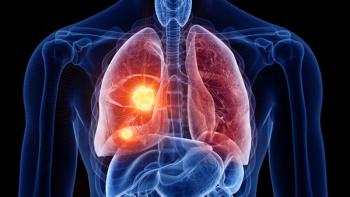
Promising Agent Shows Significant Activity in Patients with Advanced Systemic Mastocytosis
Results of a phase I trial presented showed that the agent BLU-285 (Avapritinib) agent was well tolerated among patients with an advanced or aggressive form of systemic mastocytosis (ASM), a rare blood disorder that originates in mast cells.
Results of a phase I trial presented at the 2017 American Society of Hematology (ASH) Annual Meeting in Atlanta, Georgia showed that the agent BLU-285 (Avapritinib) was well tolerated among patients with an advanced or aggressive form of systemic mastocytosis (ASM). ASM is a rare blood disorder that originates in mast cells.
Clinically significant activity of this kind is promising. Of the 18 measurable patients criteria, 72% (n = 13) achieved an overall response, including 2 complete responses and 8 partial responses Three patients showed clinical improvement, and 5 patients had stable disease. Lastly, all patients had disease control. Of these 18 patients, 17 remain on treatment.
Mast cells typically help protect the body from infection, however, systemic mastocytosis (SM) can occur when mast cells start to grow uncontrollably. The KIT D816V mutation is a common disease driver for ASM, SM with associated hematologic neoplasm (SM-AHN), and mast cell leukemia (MCL), all of which have debilitating symptoms, increased organ dysfunction and damage, and decreased overall survival. The mutation is found in approximately 90% to 95% of patients with SM.
Midostaurin (Rydapt), a multikinase inhibitor with a broad inhibitory spectrum that includes KIT D816V, is the only currently approved agent to treat advanced or aggressive SM. Unfortunately, existing treatments for the disease, including midostaurin, are limited in efficacy.
“Midostaurin is finally catching on,” said Daniel J. DeAngelo, MD, PhD, associate professor of medicine at Harvard Medical School and a member of the adult leukemia program at the Dana-Farber Cancer Institute in Boston. “It is not a trivial agent to administer, it does have a good response rate, it improves symptoms, but we do not see a lot of complete remissions.”
BLU-285 was specifically designed to treat SM as a highly potent and specific oral inhibitor of KIT D816V. In part 1 of the ongoing, phase I study, researchers aimed to establish a maximum tolerated dose (MTD), a recommended dose for phase II of the study (RP2D), and safety. Secondary study objectives included pharmacokinetics (PK) and preliminary anti-neoplastic activity of the agent.
Of 32 patients including 17 with ASM, 9 with SM-AHN, 3 with MCL; and 3 with other D816V-mutant hematologic neoplasms70% had received at least 1 prior anti-neoplastic therapy, including cladribine (n = 6), imatinib (Gleevec; n = 4), interferon-alfa (n = 4), midostaurin (n = 4), and 5-azacitidine (n = 3).
Seven cohorts of patients received once-daily BLU-285, ranging from doses of 30 mg to 400 mg, on a 4-week cycle following part 1/part 2 of the study, a 3+3 escalation/dose expansion. This 2-part process included the following:
- Dosing began at 30 mg per day and increased in a stepwise fashion to 400 mg per day
- The first 3 patients enrolled received a low dose of the study drug and were monitored for adverse effects
- If no adverse events were seen, the next three patients received a higher dose
- This continued until dose escalation was stopped when adverse events were seen in 30% of the patients treated
DeAngelo said the agent demonstrated significant clinical activity across all dose levels, including rapid and durable reductions in mast cell burden, from a median burden of 20 at baseline to 5 at best response, and in D816V mutant allele fraction, from 4.5% at baseline to 1.1% at best response. These reductions were durable, including 7 that lasted for 1 year or more, and occurred regardless of ASM subtype, prior therapy, concomitant mutations, and performance status.
Of note, 2 patients with MCL that progressed on midostaurin and 2 patients with ASM who were intolerant to midostaurin had reductions in mast cell burden, and all four remain on therapy at 5, 12, 7, and 14 months, respectively.
The most common adverse events (AEs) of any grade included periorbital edema (59%), fatigue (41%), peripheral edema (34%), nausea (28%), anemia (28%), thrombocytopenia (28%), abdominal pain (22%), diarrhea (22%), respiratory tract infection (22%), dizziness (22%), headache (22%), and neutropenia (13%).
Sixteen patients experienced grade ≥3 treatment-related AEs, including neutropenia (13%), anemia (7%), and periorbital edema (7%).
Thirty of 32 patients enrolled remain on treatment, with a median duration of 9 months. The two patients who discontinued treatment were not because of drug-related AEs. The researchers observed one dose-limiting toxicity at 60 mg, but MTD was not reached.
Based on these results, DeAngelo is hopeful that success found with BLU-125 will lead to more diagnoses of SM.
“BLU-285 has been a wonderful success in terms of getting a majority of patients in complete and partial remissions,” he said. “So, as this evolves, having better targeted agents, will improve the outcome. The second thing that it does, once you have successful therapeutic options for patients, then you can pick up and diagnose more patients. It is impressive how many newly diagnosed patients were seen that were misdiagnosed previously.”
Based on safety profile, PK, and anti-tumor activity, the researchers selected 300 mg as the RP2D. As of Nov. 27, 2017, 7 patients were enrolled in part 2 of the study, designed to evaluate dose expansion in additional patients, including 15 with ASM, 15 with SM-AHN, and 5 with MCL.
The researchers are currently planning a phase II study designed to assess the effectiveness of a once-daily dose of 300 mg BLU-285 in patients with ASM. In addition, DeAngelo said researchers are evaluating the agent for the treatment of indolent SM and smoldering SM.
DeAngelo DJ, Quiery AT, Radia D, et al Clinical activity in a phase I study of blu-285, a potent, highly-selective inhibitor of kit D816V in advanced systemic mastocytosis (AdvSM). Presented at: ASH Annual Meeting and Exposition; Dec. 9-12, 2017; Atlanta. Abstract 2.

















































































